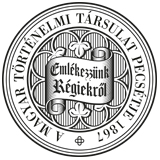Századok – 2008
TANULMÁNYOK - Raáb Renáta: Az 1848-49. évi magyarországi események schleswigi vonatkozásai osztrák és dán diplomáciai iratok tükrében III/893
THE SCHLESWIG ASPECTS OF THE HUNGARIAN EVENTS OF 1848-49 IN THE MIRROR OF AUSTRIAN AND DANISH DIPLOMATIC DOCUMENTS by Renáta Raáb (Summary) Contrary to the common approach of Hungarian and Austrian historians, the question of Schleswig was not a marginal problem but a complex European matter which transformed the region into a barrel of gunpowder within the heart of Europe. What was at stake in the Danish-German war that broke out in 1848 was whether the four major European powers (Austria, France, Britain and Russia) would manage to maintain the political balance of Northern Europe, or whether they would permit Berlin to get hold of the port of Kiel by annexing Danish territories, and to alter with the help of a strong fleet the European status quo established in 1814. The settlement of the conflict was further complicated by the dynastic problem of the duchy of Schleswig, the ruling family of which, namely that of Oldenburg, was soon to become extinct, and by the constitutional debates attached to it. Moreover, the integrity of the Danish Monarchy itself was menaced by the Danish-German national conflict within the country. German efforts at unity had led to the formation of the so-called German national liberal party of Schleswig-Holstein, which overtly aimed at transforming the duchies of Schleswig and Holstein into independent states and then they incorporation into Germany. It was in response to it that the so-called Ejder-Danish party was established, which, as is shown by the name, wanted to draw the border of the future Danish national state along the river Ejder between the ethnically mixed Schleswig and the German duchy of Holstein. The two liberal parties tried to justify their claims to Schleswig by historical documents and international treaties from the 18th century. The quarrel over the right to Schleswig led to a civil war in 1848, and both governing parties wanted to find supporters among the great powers. Thanks to the refusal of England and the negative image of France, the Danish national liberal government turned against its own reservations to Russia and Austria, the latter on the edge of dissolution, for these two were most interested in putting a halt to German efforts at unity centered in Prussia. Yet the war in Hungary offered a convenient excuse to both governments to refuse Danish petitions at an armed intervention, and by the summer of 1849 the Hungarian revolution had accordingly come into the focus of Danish foreign policy and public opinion. All this accounts for the fact that the Hungarian fight for freedom was incorporated into Danish political consciousness to a greater extent than was the Schleswig war into the Hungarian, and indeed it exerted an immediate influence upon the leaders of Danish foreign policy and the content of their diplomatic correspondence. The Danes became increasingly convinced that the stubborn resistance of the Hungarians was the main obstacle to a settlement of the Danish problem in a way acceptable to the majority of them. Not only the public opinion but also Danish diplomats used the otherwise unfit analogy between Austria-Hungary and Denmark-Schleswig-Holstein as an argument to support the rightfulness of its asking for help. As it appeared later, it did not help much, for Schwarzenberg did not percieve considerable differences between the Danish and Hungarian national liberal governments. Consequently, the contemporary question of whether the Hungarian movement was favourable or contrary to Danish interests, which then split both the Danish government and public opinion, can now be answered without serious risk of erring. The defeat of the Hungarians favoured the restoration of the pre-1848 Danish-German union state, but was a blow to the constitutional Ejder-danish Denmark, which fell definitively in 1864.
